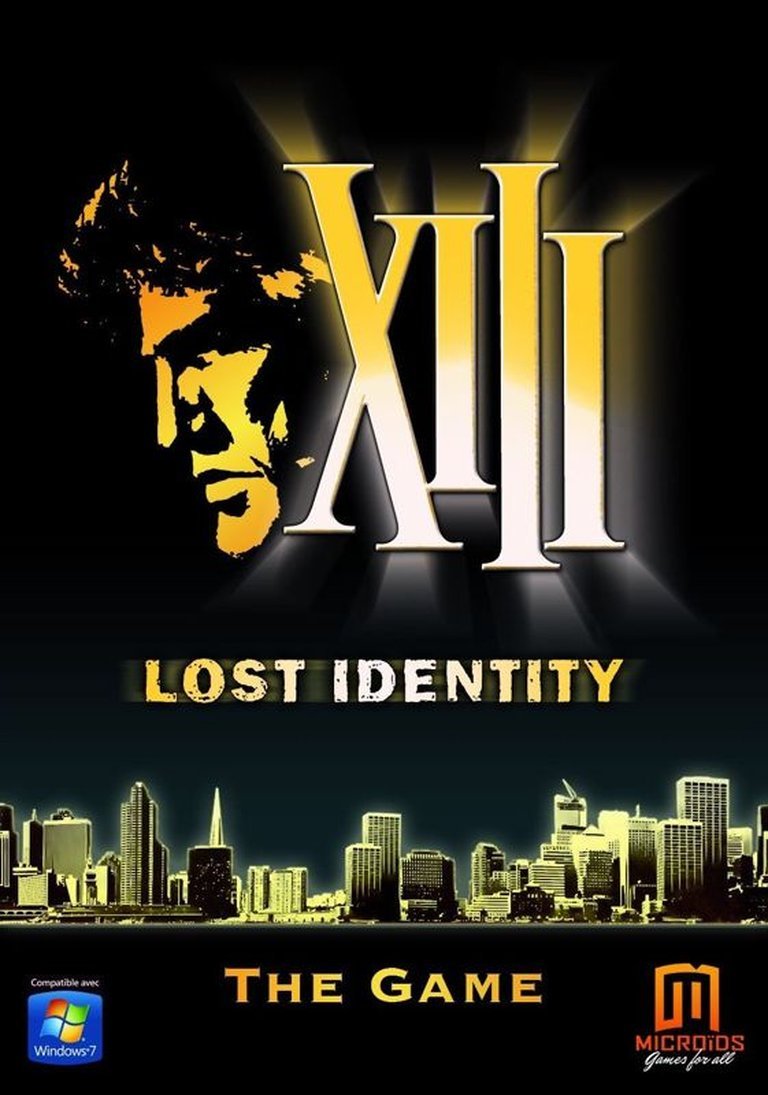- Release Year: 2011
- Platforms: Android, iPad, iPhone, Macintosh, Windows
- Publisher: Anuman Interactive SA
- Developer: Mzone Studio, Solilab
- Genre: Adventure, Detective, Hidden object, Mystery, Puzzle
- Perspective: 1st-person
- Game Mode: Single-player
- Gameplay: Hidden object, Puzzle, Shooting gallery
- Setting: United States
- Average Score: 22/100

Description
XIII: Lost Identity is a first‑person hidden‑object adventure that follows an amnesiac man marked only with the Roman numeral ’13’ as he washes ashore in North America. Based on the Belgian graphic novel series, players solve classic hidden‑object scenes, tile‑puzzles, and brief shooting sequences while conversing with key characters to uncover his past and expose a high‑level conspiracy within the U.S. government.
Gameplay Videos
XIII: Lost Identity Free Download
XIII: Lost Identity: A Conspiratorial Adventure Lost in Translation
Introduction
A forgotten relic of comic book adaptations and hidden-object obscurity, XIII: Lost Identity (2011) exists in the shadow of its better-known predecessor: Ubisoft’s cel-shaded FPS XIII (2003). Both games draw from the Franco-Belgian comic series XIII by Jean Van Hamme and William Vance, but their paths diverge sharply. This review argues that while Lost Identity strives for fidelity to its source material, its mechanical simplicity, disjointed pacing, and lack of innovation relegate it to the annals of licensed-game mediocrity.
Development History & Context
A Studio’s Gamble on Legacy
Developed by Mzone Studio and Solilab, published by Anuman Interactive, XIII: Lost Identity emerged in 2011 as part of a wave of budget-friendly, narrative-driven hidden-object games targeting casual audiences. Unlike Ubisoft’s ambitious FPS reimagining, which prioritized action and style, Lost Identity leaned into the point-and-click revival popularized by titles like Nancy Drew and Myst, albeit with a licensed twist.
Technological and Market Constraints
Released on PC, iOS, and Android, the game was designed for low-spec hardware, reflecting the mobile-first philosophy of the era. However, this came at a cost: static 2D scenes, recycled comic art, and minimal interactivity. The developers faced an uphill battle adapting a sprawling conspiracy thriller into a genre known for item hunts and jigsaw puzzles.
Narrative & Thematic Deep Dive
A Mystery Torn from the Panels
Lost Identity follows the comic’s plot up to Book 8, omitting subplots from Books 6 and 7. Players assume the role of XIII, an amnesiac spy with a numeral tattoo, unraveling a political conspiracy involving a shadowy cabal, “The XX.” The story’s strengths—complex conspiracies, morally gray betrayals—are undercut by the game’s truncated adaptation. Key characters like General Carrington and the Mongoose appear, but their roles feel abbreviated, leaving narrative gaps for players unfamiliar with the comics.
Themes of Identity and Betrayal
The game’s core theme—identity reconstruction amid institutional corruption—mirrors the comic’s noir sensibilities. However, the linear storytelling (no dialogue choices or branching paths) strips players of agency. XIII’s existential crisis becomes a passive experience, reducing the narrative to a checklist of plot points.
Gameplay Mechanics & Systems
Hidden Objects and Missed Opportunities
The gameplay loop alternates between hidden-object scenes, tile-based puzzles, and brief shooting galleries. While functional, these mechanics lack depth:
– Hidden-Object Scenes: Often cluttered and visually monotonous, relying on recycled assets from the comics.
– Puzzles: Jigsaws and sliding-tile challenges feel dated, offering minimal cognitive engagement.
– Shooting Sequences: Shallow arcade-style interludes that disrupt the pacing without adding tension.
UI and Progression
The first-person perspective and mouse-driven interface are serviceable but unremarkable. Progression is rigidly linear, with no skill trees or inventory management, limiting replayability. The absence of fail states or meaningful choices reduces stakes, making the 6-8 hour runtime feel protracted.
World-Building, Art & Sound
Aesthetic Fidelity, Artistic Stagnation
Lost Identity’s visual direction relies heavily on touched-up panels from the comics. While this preserves Vance’s iconic art style, the static scenes lack dynamism. Environments like New York alleys and Appalachian safehouses are rendered in flat 2D, sacrificing immersion for nostalgia.
Sound Design: An Afterthought
The game’s audio is sparse, with minimal voice acting and forgettable ambient tracks. Sound effects during action sequences (gunfire, explosions) feel detached from the comic’s gritty tone, further distancing players from the narrative.
Reception & Legacy
Critical Indifference and Player Disappointment
Lost Identity garnered a tepid 2.4/5 average player score on MobyGames, with no critic reviews at launch. Critics of the genre panned its lack of innovation, while comic fans lamented its superficial adaptation. The game underperformed commercially, overshadowed by Ubisoft’s XIII and its cult following.
A Fading Echo in Gaming History
The title’s legacy is confined to niche discussions about licensed-game pitfalls. Its sole innovation—direct comic-panel integration—failed to inspire successors. The 2020 XIII remake’s infamy further buried Lost Identity in obscurity.
Conclusion
XIII: Lost Identity is a cautionary tale of ambition constrained by genre conventions and licensing demands. While its dedication to the source material and accessible design might appeal to comic purists or casual puzzle fans, its mechanical shallowness and narrative fragmentation undermine its potential. In the pantheon of XIII adaptations, this entry remains a footnote—a well-intentioned but ultimately forgettable experiment in transmedia storytelling. For historians, it serves as a case study in the risks of adapting dense narratives into rigid genres. For players? A relic best left on the shore.
Final Verdict: A passion project shackled by its own design, Lost Identity earns 2.5/5 stars—worthy of curiosity, but not commitment.